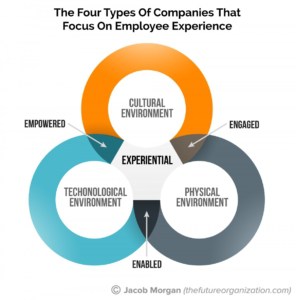To celebrate our tenth birthday, over the next few weeks, and months, we will explore how building performance practices have developed since our founding.
In this article, we look at how awareness of Productivity and Wellbeing has grown over the last ten years. Since 2010, an increasing body of research proves the surprising extent to which the environments we work in, make or break our wellbeing and performance.
We can’t overstate how important people’s wellbeing is for organisations. People invariably underperform in substandard conditions. On the other hand, optimal conditions promote the wellbeing which is the foundation for creativity and productivity – as individuals, organisations and nations.
2010-13 – Beanbags and ping pong tables
The research of the early 2010s explored how exercise leads to higher productivity. Swedish researchers in 2011 found that people exercising 2.5 hours per week were more productive in less time than their sedentary colleagues. Exercise also increased health and reduced absenteeism.
This period saw Silicon Valley companies installing ping pong tables, beanbags and chill out areas to improve staff productivity and happiness. The 2013 British Council of Offices (BCO) study “What Workers Want” study found that 60% of respondents said a funky office improved their productivity. Hindsight allows us to see how far things have moved on since the time when simply installing ping pong tables was seen to improve productivity.
2014 – Office design, air quality and productivity
In 2014, The World Green Building Council published “Health, Wellbeing and Productivity in Offices”. This report presented evidence that office design hugely impacts staff productivity and wellbeing. An important, intriguing and ground-breaking finding was that improving indoor air quality leads to productivity increases of 8% – 11%.
2015 – CO2 and VOCs destroy our cognitive ability!
The momentum builds. The concept of indoor quality was further explored by Harvard University in their study “The impact of green buildings on cognitive function”. The study provided dramatic results about how much CO₂, Volatile Organic Compound (VOC)1, and ventilation rates all significantly impact cognitive function. The results were frankly stunning: cognitive scores were higher by 61% in low VOC indoor environment, and higher by 101% in low VOC indoor environments with improved ventilation.
2016 – The financial imperative of improving the workplace environment
The Stoddart Review revealed that an effective workplace improves overall business productivity by up to 3.5%. The review found that British businesses often focus only on making their workplace more efficient rather than making people more efficient. This is a key economic point that can’t be overstated. The review argues that since employees account for an average 90% of an organisation’s cost, it makes clear sense to ensure that the working space is fully optimised to get the most out of people.
2017 – Productivity gains can cover your rental costs
The BCO’s 2017 report: Defining and Measuring Productivity in Offices was consistent with the Stoddart Review: an organisation will gain overall productivity improvements of 2-3% by improving workplace environmental quality conditions.
The cost of improving workplaces is small given the productivity gains equates to 30% of annual office rental costs in central London and 75% outside London.
2018 – Lower CO2 levels and work way faster and more accurately
The British Council for Offices (BCO) published the results of Whole Life Performance Plus (WLP+) a £530,000 three-year study, led by Oxford Brookes University and LCMB Building Performance Ltd, with funding support from Innovate UK and Engineering and Physical Sciences Research Council (EPSRC).
The study assessed people’s performance in real world environments and identified how typical office environments dramatically undermine productivity and performance.
The research ran cognitive tests on staff in real world working environments and found that indoor environmental conditions dramatically impacted people’s cognitive capability and performance.
By lowering CO2 levels from normal, to optimal levels, people completed cognitive tests 60% faster and 12% more accurately.
2019 – Improving productivity – the cultural and commercial considerations
With irrefutable evidence that workplace improvements deliver commercial benefits, we tackle the question of why doesn’t every organisation implement improvements?
In 2019, LCMB and the BCO ran a workshop with leading industry figures and published a briefing note entitled “The Business Case for Productive, Higher Performing and Healthier Workplaces”.
The briefing note summarises the cultural and commercial issues that UK organisations should address to create productive workplaces.
The big lessons?
- Organisations should progress from focussing on basic inputs such as temperature and embrace newer research around other measures such as air quality.
- Organisations must assess their people’s productivity and wellbeing, and track the link between the internal environment quality, and staff wellbeing and productivity.
- Facilities Management and Human Resources should collaborate to make this work.
2020s – How to get a competitive advantage, and workers empowered by wearable technology.
Staff wellbeing is now a mainstream concern for organisations. Progressive organisations clearly understand the link between staff, and organisational wellbeing.
Wellbeing is at the heart of our creativity and performance as individuals. And it is key to an organisation’s competitive advantage. Organisations are but a collection of individuals, no matter how sophisticated the other resources are that they might have at their disposal.
We see three drivers for organisations to improve the work environment in the coming years.
- Pressure from employees that access the data. Accelerated development of wearable and portable technology means that workers can get detailed data about their workplace conditions. Workers will understand the impact of their environment on their health and performance and demand that employers make the necessary improvements.
- Organisations “competing to care”. As we understand the impact of our workplaces on us as individuals, more and more organisations will come under pressure to improve their workplace environments, or risk losing their staff to others that care.
- Evolving legalisation around the effects of poor indoor environmental quality. For example in January 2020, researchers found that installing air filters in schools can raise test scores by the same amount as reducing class sizes. NICE have also started to publish health guidance for residential indoor air quality because of the National Impact. Our team has been researching these issues over the last few years in collaboration with world class partners.
Conclusion
We see our clients dealing proactively with these pressures and turning to our ground-breaking, exciting approaches that allow people to thrive in the workplace.
Get in touch with me on t: 01295 722823, e:[email protected] if you’d like to learn more and understand how we can help you supercharge your workplace wellbeing, performance and productivity.
1Volatile Organic Compound: a term given to a number of organic chemicals, including benzene and acetone, that evaporate or vaporise readily and are harmful to human health and the environment, commonly found in new carpets, furniture, paints and finishes as well as cleaning materials etc.





